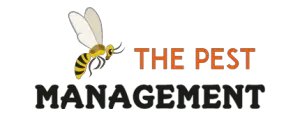Are you worried about your laminate flooring being susceptible to the attacks of woodworms? Can you get woodworm in laminate flooring?
Which types of flooring do woodworms not eat? Should I panic if there are woodworms in my floorboards?
In this article, we will discuss woodworms and flooring with a focus on, “Can you get woodworms in laminate flooring?”
Can You Get Woodworm in Laminate Flooring?
No. There are two main reasons why woodworms will not be able to eat through laminate flooring. The first reason is because of the melamine face that is layered on top of the laminate flooring itself protects the engineered wood.
The second reason is because high density fiberboard inside laminate flooring contain formaldehyde in most cases. This substance would surely kill woodworms off if they attempted to chew through it. Your laminate flooring is safe from woodworms.

Do Woodworm Eat Laminate Flooring?
Laminate flooring is a popular, attractive and cheap option for many homeowners who would like to have floorboards at a fraction of the cost. The high-density fiberboard is usually made like chipboard or MDF which are all engineered to glue wood fibers together.
Most laminate flooring contains formaldehyde which is toxic and would not allow for woodworms to:
- survive
- breed
- eat
The melamine face that is the tough outer coating protects the wood fibers inside from humidity, dampness and further damage. This coating will not allow woodworms to penetrate through it.
If laminate flooring weakens due to dampness and cracks, there will be openings that may allow for woodworms to penetrate through if there is no formaldehyde inside it.
Chances are extremely slim and you should not be concerned about woodworms being able to eat through laminate flooring.
Do Woodworm Eat Chipboard?
Chipboard is another example of manufactured wood that wood worms do not regularly eat. Woodworms feed off of timber and wood that contain cellulose. Since chipboard is manufactured industrially, it involves mixing chemicals into it.
This would remove or make the cellulose inside the wood inedible for woodworms. If chipwood is dampened due to moisture, woodworms may be able to eat through it.
The toxic chemicals however, would kill them. This means you will not have a woodworm infestation in your chipboard.
Do Woodworm Eat MDF?
MDF types of wood are industrially manufactured and also contain toxins such as formaldehyde. If woodworms were able to penetrate through it, they would most likely be poisoned by this type of wood.
The cellulose is not present or is compromised with the adhesives and toxins that are mixed into the MDF.
If MDF soaks up moisture, woodworms could possibly enter but since there is not enough nutrition or the possibility of consuming the cellulose. This is why they will not be able to remain there.

Do Woodworm Eat Plywood?
No. Plywood contains casein that woodworms enjoy eating, but also glue. The adhesive materials would cause woodworms to be poisoned if they were trying to ingest the materials inside it.
The only way plywood would be considered an option for woodworms to eat is if it is old and damp. Plywood in dark and damp locations such as garages, lofts or under the stairs would be areas where woodworms might be able to breed.
Sapwood is contained inside plywood and would be sufficient cellulose source for woodworms to eat if they can avoid consuming any adhesives or toxins that were also present.
Do Woodworm Eat OSB?
Woodworms will not be able to consume OSB engineered wood. The wood strands are compressed and glued together.
Therefore, these chemicals involved in the glue including formaldehyde would prevent any sort of woodworm infestation.
There is not enough nutrition and it would be hard for woodworms to sort through it in order to thrive. OSB is engineered wood and generally safe from woodworm infestations.
Do Woodworm Eat Hardboard?
Hardboard is a manufactured type of wood similar to MDF or OSB. Due to the manufacturing process involving many chemicals, the sugars and cellulose are removed or the material end up becoming toxic for woodworms to consume.
Hardboard is usually used as paneling and is less susceptible to infestations compared to older floorboards.
Woodworms will be capable of chewing through hardboard, but they would have a very difficult time to live in it and to survive with the lack of nutrition for them to thrive.

Found Woodworm in Floorboards Should I Panic?
You do not need to panic if you find woodworms in your floorboards. You can call a professional to help you exterminate the problem or you can considered treating woodworms by yourself.
We recommend a specialist to come in and inspect your floorboards carefully to make sure that the infestation has not grown out of control. Usually, homeowners will be able to attack a woodworm problem if it is localized in the piece of furniture.
If woodworms have spread through floorboards however, it would be beneficial to you to call a professional service to assess the severity of the issue.
Signs of Woodworm in Floorboards
These following 4 signs may indicate that you could have woodworms inside your floorboards:
- Fresh Exit Holes
- Tunnels In Wood
- Bore Dust
- Weak & Damaged Floor Boards
If your floorboards have been painted, varnished or waxed, the eggs will not be able to survive and they won’t be able to bore through it as they develop.
Conclusion
Since laminate is coated with a melamine surface and contains formaldehyde in most cases, woodworms will not be able to survive inside it.
Laminate flooring is a cheap and effective option for your flooring needs and you should not be concerned about woodworms attacking it.
Thanks for visiting ThePestManagement.com for the best information to help you to make the pest control process easy, safe & affordable.
